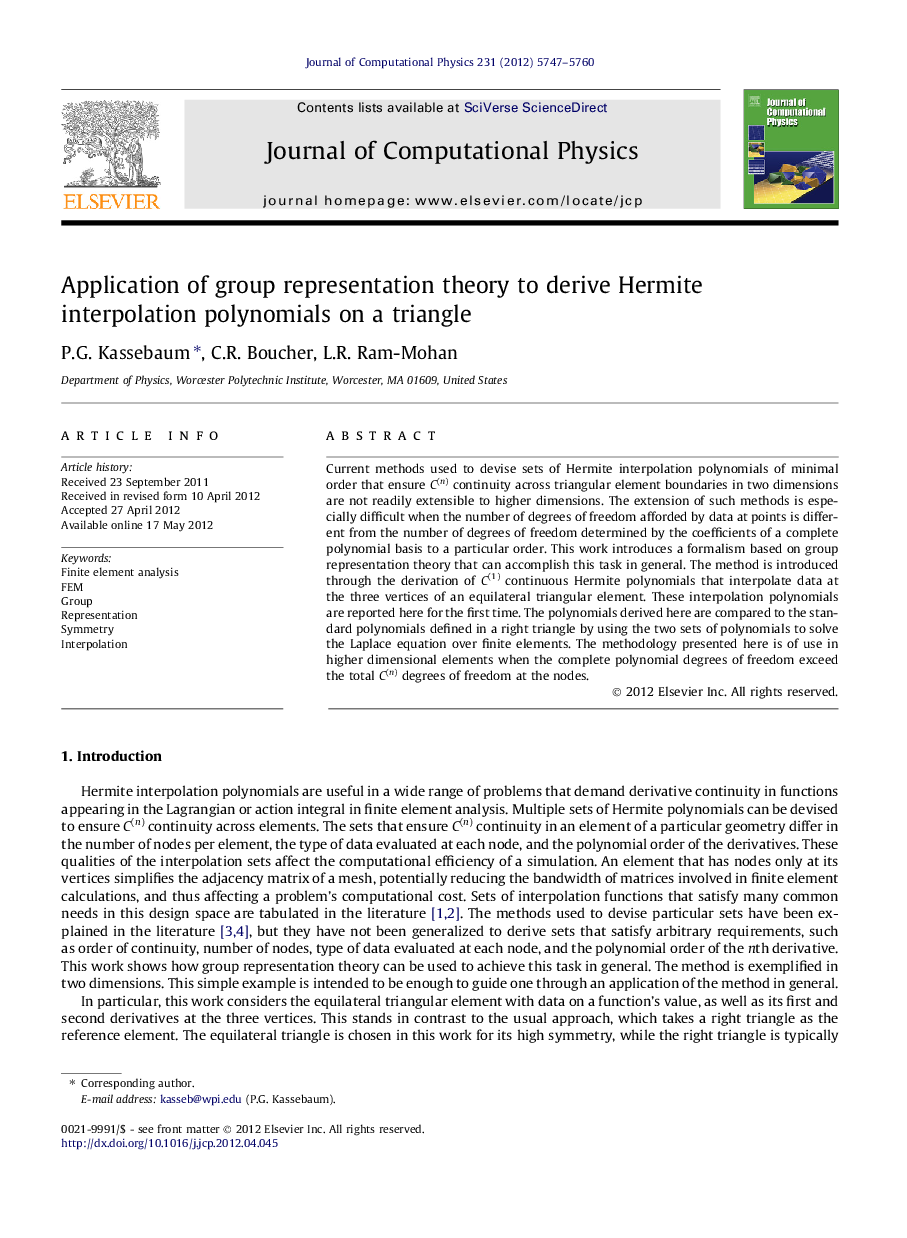| Article ID | Journal | Published Year | Pages | File Type |
|---|---|---|---|---|
| 521928 | Journal of Computational Physics | 2012 | 14 Pages |
Current methods used to devise sets of Hermite interpolation polynomials of minimal order that ensure C(n) continuity across triangular element boundaries in two dimensions are not readily extensible to higher dimensions. The extension of such methods is especially difficult when the number of degrees of freedom afforded by data at points is different from the number of degrees of freedom determined by the coefficients of a complete polynomial basis to a particular order. This work introduces a formalism based on group representation theory that can accomplish this task in general. The method is introduced through the derivation of C(1) continuous Hermite polynomials that interpolate data at the three vertices of an equilateral triangular element. These interpolation polynomials are reported here for the first time. The polynomials derived here are compared to the standard polynomials defined in a right triangle by using the two sets of polynomials to solve the Laplace equation over finite elements. The methodology presented here is of use in higher dimensional elements when the complete polynomial degrees of freedom exceed the total C(n) degrees of freedom at the nodes.
